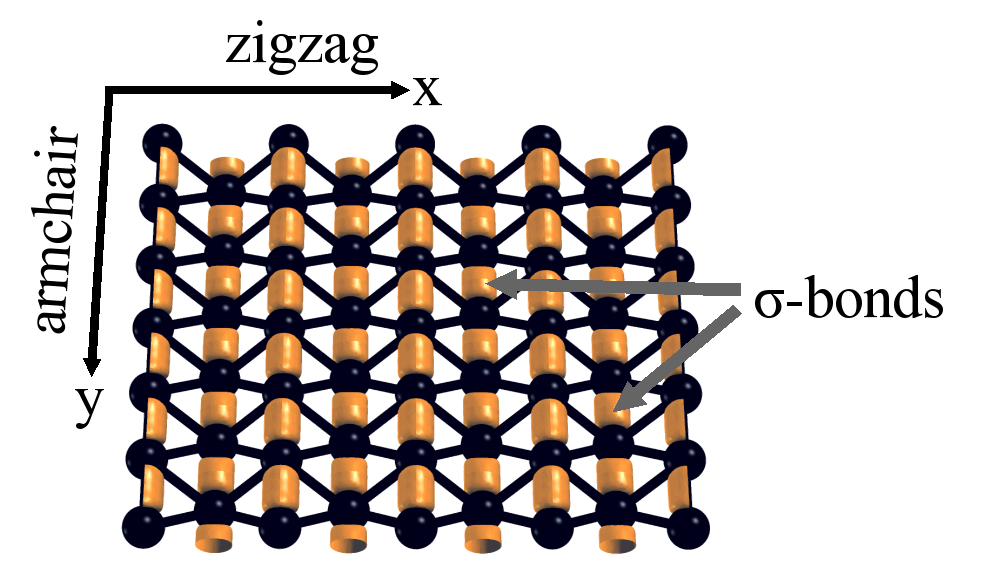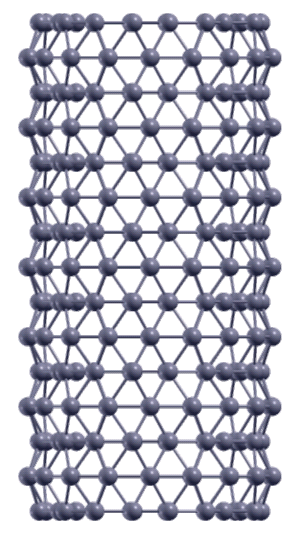Novel Phases
of Elemental Boron
Research on the chemistry of elemental boron is developing rapidly. The
existence of quasi planar and tubular boron clusters was predicted by
theory in the 1990ties and confirmed by experiment recently. Up
to now, however, very little is known about the properties of these
novel boron phases.
To deepen the understanding of these materials Jens Kunstmann (in
cooperation with A. Quandt, University of Greifswald) studied boron
sheets and boron nanotubes using ab
initio methods [1,2].
Boron Sheets
A broad boron sheet (see figure to the right) is the analogue of a
single graphite sheet and the precursor of boron nanotubes. The sheet
has linear chains of sp
hybridized sigma-bonds (yellow contours) lying only along its so called
armchair
direction, a high stiffness, and anisotropic bonds properties. The
puckering of the sheet was explained as a mechanism to stabilize the sp sigma-bonds. The anisotropic
bond properties of the boron sheet lead to a two-dimensional reference
lattice structure, which is rectangular rather than triangular. As a
consequence the chiral angles of related boron nanotubes range from
0° to 90° (in contrast to 0° to 30° for carbon
nanotubes) [1].
Boron Nanotubes

The morphologies of the boron sheet and boron nanotubes are strongly
related, as shown in the figure to the right (which on the left shows
an armchair boron nanotube). Therefore one can consider the sheet,
described above, as the precursor of boron nanotubes. Given the
electronic properties of the boron sheet, we could
demonstrate that all of the related boron nanotubes are metallic,
irrespective of their radius and chiral angle, and we also postulated
the existence of helical currents in ideal chiral nanotubes.
Furthermore, we showed that the strain energy of boron nanotubes will
depend on their radii, as well as on their chiral angles (see right
part of the figure). This is a
rather unique property among nanotubular systems, and it could be the
basis of a different type of structure control within nanotechnology.
Zigzag boron nanotubes seem to have little or even no strain energy,
which could imply that these types of boron nanotubes do not exist at
all [1]. This interpretation also explains
the morphology of so called constricted
boron nanotubes, that
were reported by us earlier [2].
- J. Kunstmann and A. Quandt
Broad boron sheets and boron
nanotubes: An ab initio study of structural, electronic, and mechanical
properties
Physical
Review B 74, 035413 (2006), (arXiv)
- J. Kunstmann and A. Quandt
Constricted boron nanotubes
Chemical
Physics Letters 402, 21 (2005)
, (arXiv)



